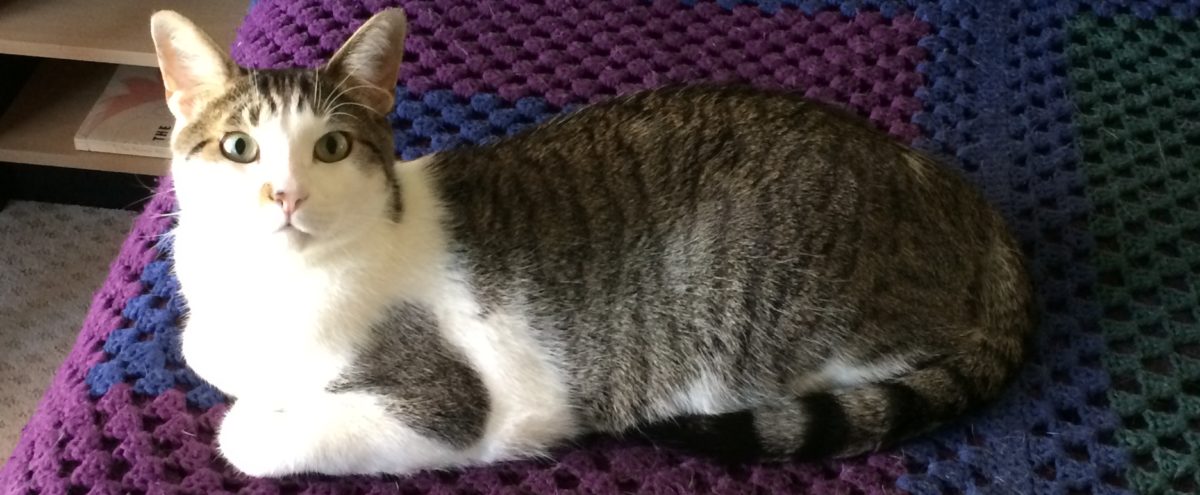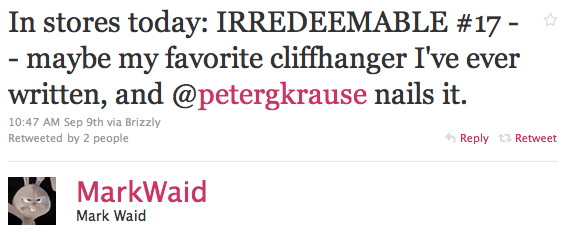The Dark Age is the longest Astro City story to date, running 16 issues plus a prologue (now collected in books one and two) – more than twice as long as any earlier story. Chronicling the era in Kurt Busiek’s creation from the early 1970s to the mid 1980s, the story has some interesting backstory: First, when it started running back in 2005, I recall it was heralded as the story that would reveal what happened to the Silver Agent, who was one of Astro City’s greatest heroes back in the day, but whose fate left the city ashamed of its behavior. Second – and this didn’t come out until later – Busiek had originally pitched The Dark Age as a sequel to his seminal series with Alex Ross, Marvels, and ended up reworking it for Astro City instead, later writing a different sequel to Marvels (Eye of the Camera).
There are some spoilers below, so if you want to read the whole thing with every little surprise, then I suggest doing so first. But the story is so sprawling that there is plenty I won’t reveal even if you do forge onwards.
The prologue takes place in 1959, where two children, Royal and Charles Williams, witness a fight between the Honor Guard and a high-tech gang named Pyramid. The younger one, Charles, is shown stealing an apple, but the pair are shamed later when they encounter the Black Badge, one of the few black superheroes. The pair go home to their family, and we learn only later that that evening, in the aftermath of the big battle, that their parents are killed when the Silver Agent pursues a Pyramid agent through their building.
The bulk of the story takes place in four parts, each keyed by one of the four seasons. Summer, 1972, sees Charles having grown to become a policeman, while Royal is now a small-time crook. Viet Nam is raging, a crazy variety of heroes are showing up (including the Apollo Eleven, human spacemen who now resemble aliens), and the Blue Knight is stalking and executing criminals. Royal and Charles barely speak to one another until Royal is tagged for execution by the Knight. Meanwhile, the Silver Agent is arrested for murdering a super villain and is sentenced to death. The sentence is carried out at the end of this part – at the same time the Silver Agent is seen saving the city from an enemy of the First Family.
Part two, Fall, 1976, shows how the city has gotten darker and more dangerous in the years since the Agent’s execution (symbolizing the end of the silver age of heroes): Villains turned heroes, heroes turned vigilantes, or tortured by inner demons. Charles has married a gold-digger, and she’s constantly pushing him to get “on the take” on the force, like his partner and several others, but Charles refuses. Royal hooks up with one of the underworld lords in the city thanks to his cool head and clear thinking under pressure, and learns that his boss has called in Pyramid to help. He realizes after a while that the Pyramid liaison is the man who killed his parents. It all comes to a head at the end of the chapter, when a heroine’s powers go awry causing chaos in the city, the Silver Agent shows up to save the day, and Royal has to make a decision to save Charles’ life.
Winter, 1982, is filled with dark events, but it focuses mainly on Charles and Royal putting their differences behind them to pursue their parents’ killer: Charles becomes a member of the international peacekeeping force E.A.G.L.E., while Royal infiltrates Pyramid, who are interested in capturing the Apollo Eleven to tap the power of their unified entity, the Incarnate. The pair are right in the middle of the final showdown between Pyramid and the Honor Guard, which goes wrong when a reckless hero fires a powerful weapon at the possessed Incarnate in order to destroy him, which rends a hole in the fabric of spacetime.
Spring, 1984, shows the Williams brothers as having put together a collection of high-tech equipment to pursue their foe, hounding him again and again but never quite catching him. They encounter a number of bizarre heroes, while their quarry feels cornered and makes a leap to gain powers himself, succeeding but at great cost, The brothers confront him in the final issue with the help of the Silver Agent, who arrives to seal the rift from part three, but the showdown is bittersweet for Royal and Charles.
The story ends with an epilogue in which the dark age comes to an end with the appearance of the Samaritan, and where we learn what happened to Charles and Royal.
The Dark Age is a big, sprawling story chronicling over a decade in the history of Astro City, a period which mirrors the explosion of diversity in superhero comics of the 1970s, as well as the darkening of those comics as not only did heroes change and get weirder (the new X-Men, and depowered Wonder Woman), but DC and Marvel experimented more with non-superhero books, especially horror titles. The decade seemed to have few keynote series (sure, the X-Men are lauded today but they weren’t really big until the early 80s), any of the creators of the big Marvel books of the 60s had left, and small-press and creator-owned titles were starting to appear. It was a weird decade, and I think that’s what Busiek is getting at in the almost-anything-goes nature of the heroes and villains in Astro City in this story.
The problem is that the magnitude of the setting makes the story feel less focused than past stories, and the setting – which has always been as much a character in Astro City as the people themselves – feels too diffuse, no elements given enough screen time to really satisfy. This is true even of the Silver Agent thread: Even though he’s integral to the progress of the story, what we see is still more tantalizing than satisfying, and at the end we feel like we’ve learned a little more, but not nearly enough. (The rest of the Agent’s story is being filled in via the 2-part specials, the first of which came out last week. But still, that didn’t really help The Dark Age, of which my frustration over the Agent’s part was merely exemplary of my frustration with other little pieces we saw.)
Busiek was consistent in saying that The Dark Age is the story of Royal and Charles Williams, and while it’s true that much of the focus lay on them, it got spread around a lot too. And the problem with them is that they don’t number among the most interesting characters we’ve seen in Astro City. I can’t say that they’re ciphers, but their story arc just ended up being disappointing. I think the problem came mid-way through the series, after the brothers had essentially cut ties with the police and the underworld in order to pursue the killer of their parents. Normally leaving your life behind to pursue your own goals would be a defining moment, but instead it feels like they become less men than just overriding drives, making them less interesting to follow. I think to some degree this is the point of their evolution, but in the climax things just abruptly come to an end, and while it’s clearly frustrating to the Williams brothers how things turn out, it’s also a letdown to the reader, where it’s not clear what the dramatic point of it all was.
To boil it down even more, ultimately the story is more that of Royal than of Charles. Charles essentially “grows up” at the very beginning, in the prologue, then he becomes a cop, and is put in an untenable situation and is forced essentially to regress because everything he’s believed in has been torn down. His arc is especially unsatisfying because there isn’t the corresponding build-up at the climax making him into a new mature person; he’s just left dangling (and the epilogue doesn’t really do justice to him, either). Royal has a more traditional arc, of being a crook who finds redemption by helping his brother find purpose after he leaves the police, and then helping his brother see what their quest for vengeance has turned them into. It’s not a bad arc, really, but it feels so understated, so overwhelmed by the other elements in the story, even up to the climax, that it’s not enough to really build the meaning of the story around.
To be fair, one of the big frustrations with The Dark Age is that the series came out very gradually over about five years, which meant it was difficult to really care about it when you’re in part 10 of 16 and it’s not clear how long it will be until the next issue arrives. I re-read the whole thing after the final part came out, and while it holds up better on re-reading, it’s still nowhere near as good as earlier long-form stories in the series (of which Confession is in my opinion the gold standard). There’s too much… and yet not enough of any one (or two or three) things.
Fundamentally, I think the problem is that The Dark Age really did turn out to be about the age and not about the characters. Confession and The Tarnished Angel are both unequivocally about their protagonists, and Busiek throws in characters and background and situations and history as needs dictate. The climax of Confession suffers a little from not going into some of the background of its players (E.A.G.L.E., and the other heroes who join in the fight) enough, and The Tarnished Angel has an awkward twist in the middle before coming back to the main story, but both largely stay focused on their main arc. The Dark Age runs here and runs there, comes back to visit the main characters, then covers some more territory, and keeps going back to show how dark everything’s gotten.
I haven’t said much about the art, and that’s because Brent Anderson is one of the most consistent – and consistently good – artists in comics today, so if you’re familiar with his work on the series in the past, then you have a good idea what you’ll be getting here. He’s not especially flashy, and his work doesn’t gosh-wow me the way George Pérez’s or Jerry Ordway’s does, but you have to give him props in that he draws both the heroes and the ordinary folks, the fantastic landscapes and the mundane cityscapes, and pulls it all together into a coherent visual whole. The book would be a very different thing without him, with someone else on the art chores.
In the end I admit some of my disappointment in The Dark Age is that it was very ambitious and didn’t really achieve its ambitions, to my mind, and also that its emphasis (the Williams brothers rather than the Silver Agent) wasn’t what I’d been hoping to read. But I think it had some real problems in focus and storytelling, too.














